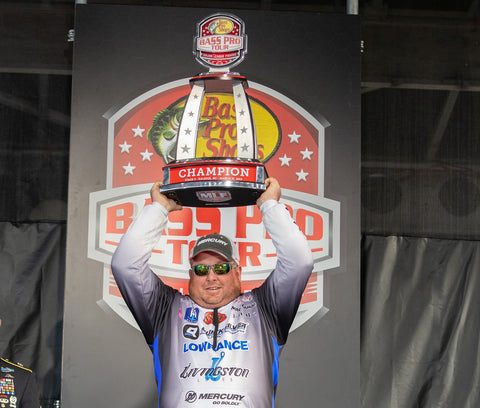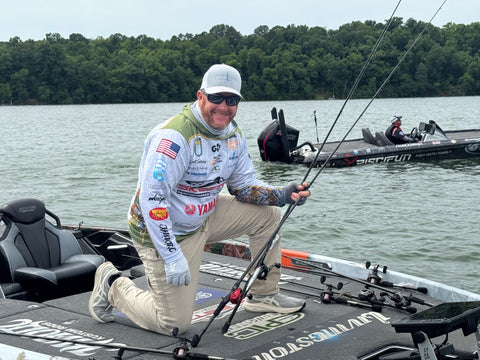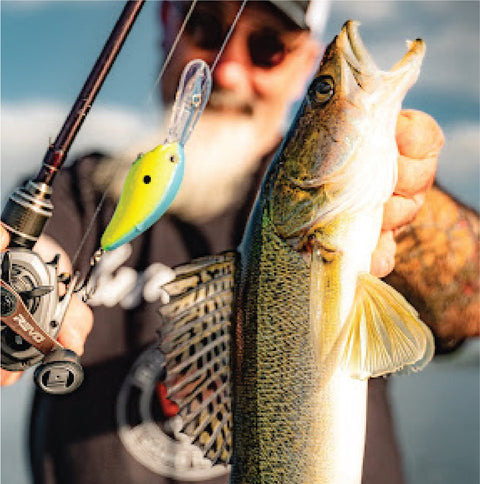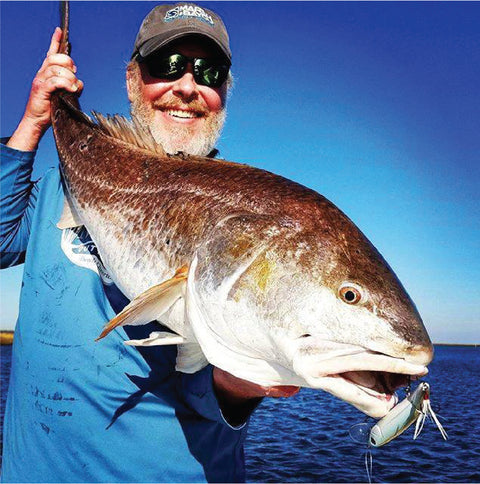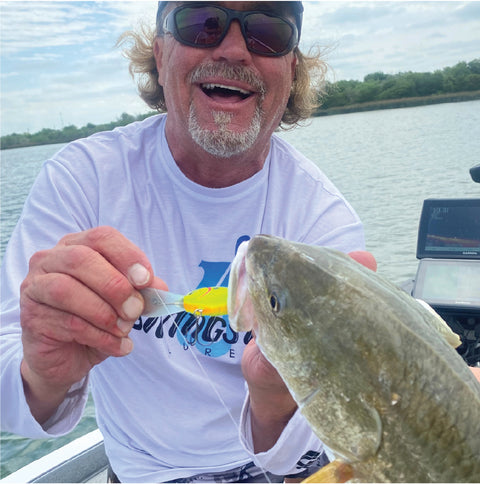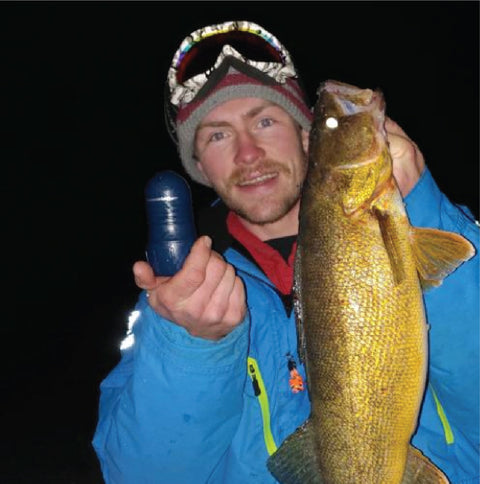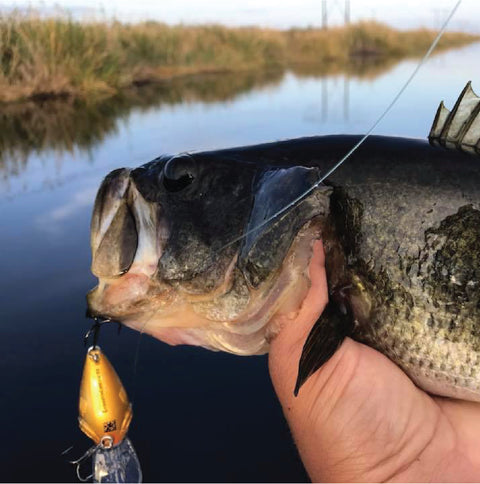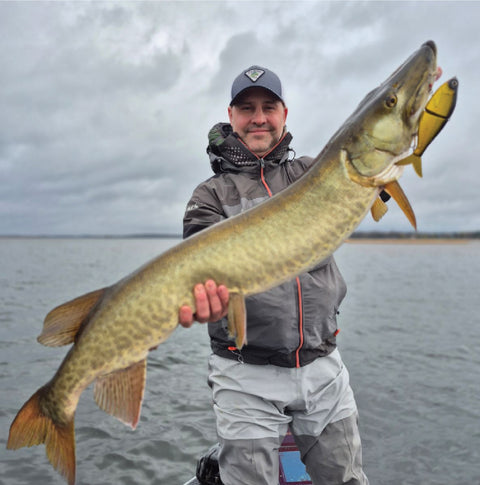Summertime Walleye Trolling in Wisconsin’s Northwoods

Trolling for walleye during midsummer in Wisconsin’s Northwoods is one of the most efficient ways to cover water and catch fish across the region’s clear lakes and expansive flowages. As walleye spread out in systems like the Chippewa Flowage, Turtle-Flambeau Flowage, or Lake Minocqua, trolling becomes more productive than traditional live bait tactics. Guide proven trolling techniques using Livingston Lures' Walleye Shad 90 and Voyager 15 crankbaits are guaranteed to help you put more fish in the boat this July.
Why Trolling Works in the Northwoods Mid-Summer
By mid-July, Northwoods walleye are on the move, dispersing as baitfish populations boom. That makes slow, stationary presentations like slip bobbers or live bait rigs less effective. Trolling allows you to quickly cover water, locate active fish, and mimic the movements of key forage like perch and ciscoes. The Northwoods’ cooler summer water temps keep walleyes feeding, and a properly presented crankbait can trigger reaction strikes when fish are cruising weed lines, breaklines, or suspended in the basin.
How to Troll for Walleye in Wisconsin’s Northwoods
Troll at the Right Speed
A trolling speed between 2.1 and 2.5 mph is ideal for searching broad, clear lakes like Pelican or Lac du Flambeau. Start fast to locate fish, then slow down slightly if you need to dial in bites. Water clarity impacts speed preference—clearer lakes often require slower presentations to fool wary walleye. Planer boards can be used to spead lures out allowing you to dial in quickly while spreading lines away from the boat allowing. The Blade Planer boards are the perfect choice for walleye trolling as they can handle any on the water conditions and allow vibration to be passed to the rod tip allowing for monitoring of your lures action.

Match Crankbaits to Local Forage
Choose crankbaits that mimic the size, action, and color of the baitfish walleye are feeding on.
-
Walleye Shad 90: This compact bait has a tight wiggle and high-pitch rattle—perfect for clear, deep lakes where walleye key on small perch or young-of-year baitfish. It’s deadly on lakes like Big Arbor Vitae.

-
Voyager 15: With a wider wobble and shallower dive curve, the Voyager 15 excels on leadcore setups or when walleye are feeding higher in the water column. Its sound and action make it a standout in stained systems like the Chippewa Flowage.
Use a 30- to 50-foot fluorocarbon leader to keep lures away from leadcore line, creating a more natural presentation. Stick to natural colors in clear water, and go bold with chartreuse, firetiger, or UV patterns in stained systems like those found throughout Vilas and Oneida Counties.
Troll Into the Wind
In wind-driven lakes, walleye often orient into waves or slight currents. Trolling against the wind presents your lure naturally—head-on to the fish—and often increases strikes. If you notice consistent bites traveling one direction, stick with it. On smaller lakes like Squirrel or Tomahawk, make shorter return passes to verify patterns.
Target High-Percentage Structure
Focus your trolling passes along sunken islands, deep weed edges, and breaklines—key walleye structures in northern lakes. Use sonar to locate bait clouds and suspended fish. On lakes like Tomahawk and the Willow Flowage, look for timber and hard-bottom transitions where walleye stage to ambush prey.
Short, deliberate passes near structure often outproduce long, wandering trolls. Once you mark fish, keep circling back with subtle changes to speed or lure color until they commit.
Practice Smart Fish Handling
Northwoods lakes are deep and cold—great for fish health, but it’s still important to handle walleye with care, especially if practicing catch and release. Use a rubber net and unhook fish in the water when possible. Keep pliers handy, as crankbait-caught fish often take both trebles.
Northwoods Trolling Tips at a Glance
-
Start Early: Mid-July offers the best trolling window before fish get sluggish later in summer.
-
Watch Water Temps: Cooler midsummer temps in the Northwoods keep walleye feeding—use this to your advantage.
-
Be Flexible: Change trolling speed, direction, lure size, or color based on the day’s conditions.
-
Stay Tidy: Organize rods, leaders, and baits to make quick adjustments. Scattered fish demand fast reaction time.
If you’re trolling for walleye in Wisconsin’s Northwoods, mid-July is prime time. With the right crankbaits—like Livingston Lures' Walleye Shad 90 and Voyager 15—and a strategy tuned to local structure, water clarity, and baitfish, you’ll find success. From the deep basins of Lake Minocqua to the timber flats of the Chippewa Flowage, efficient trolling is the key to staying on fish. Start early, adapt often, and enjoy the rewards of a classic Northwoods summer.
Livingston Lures


